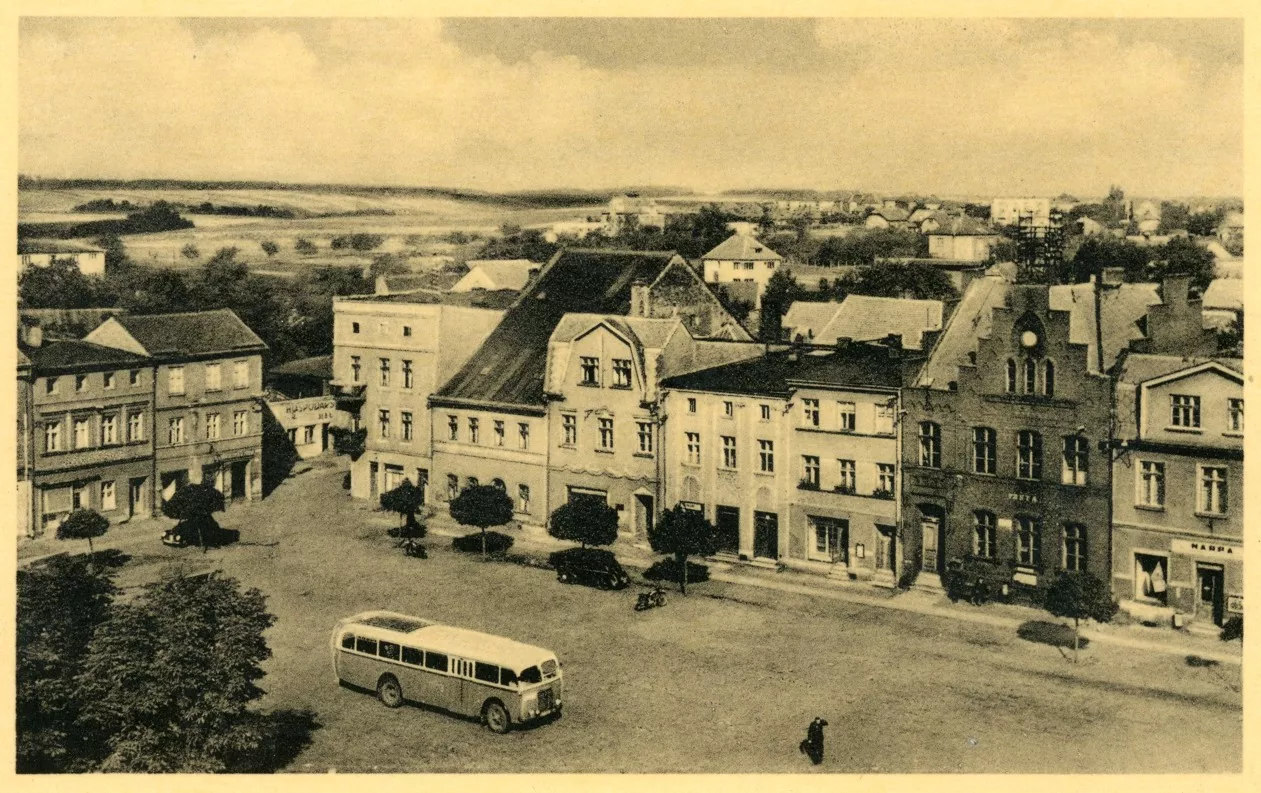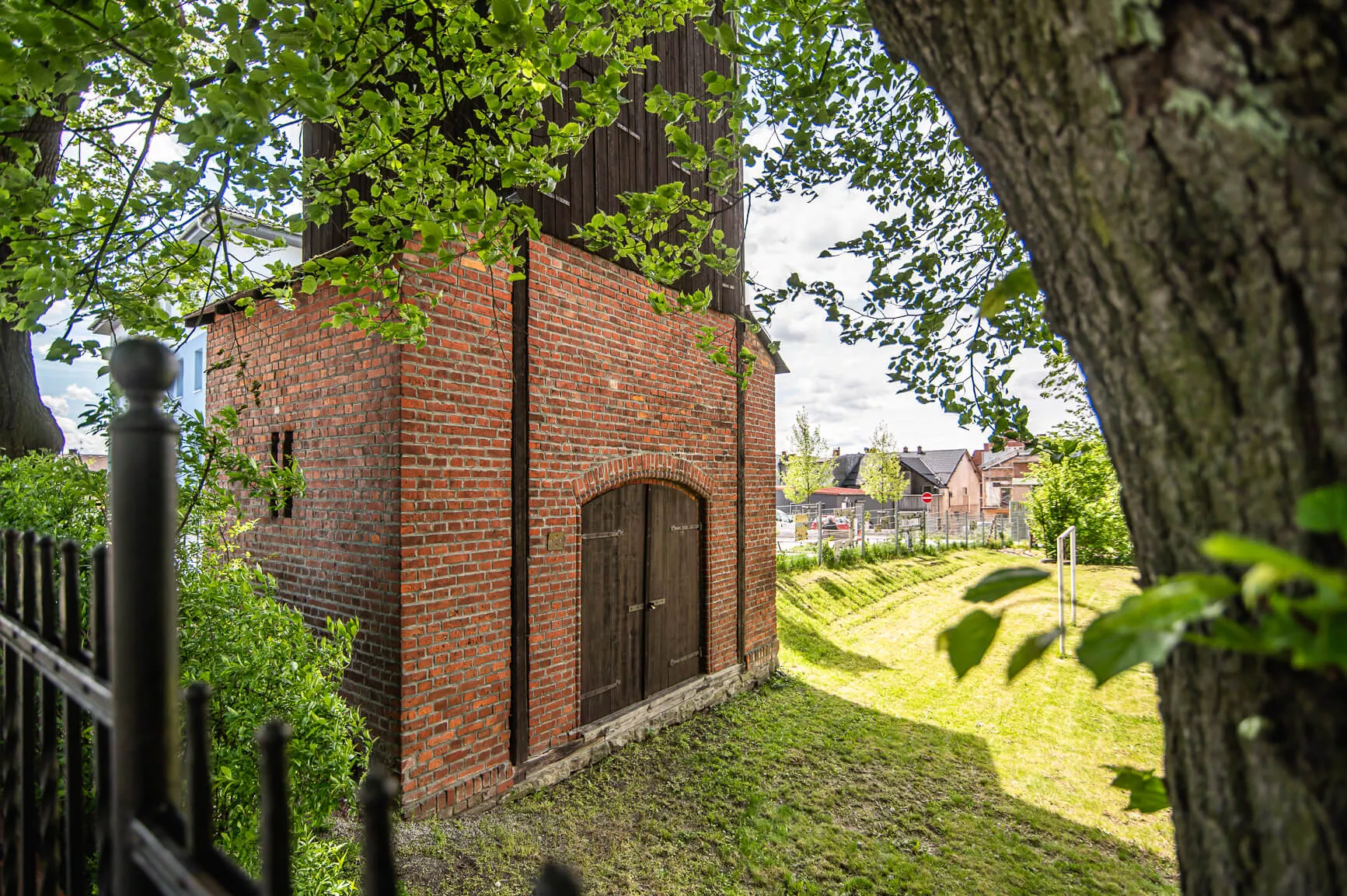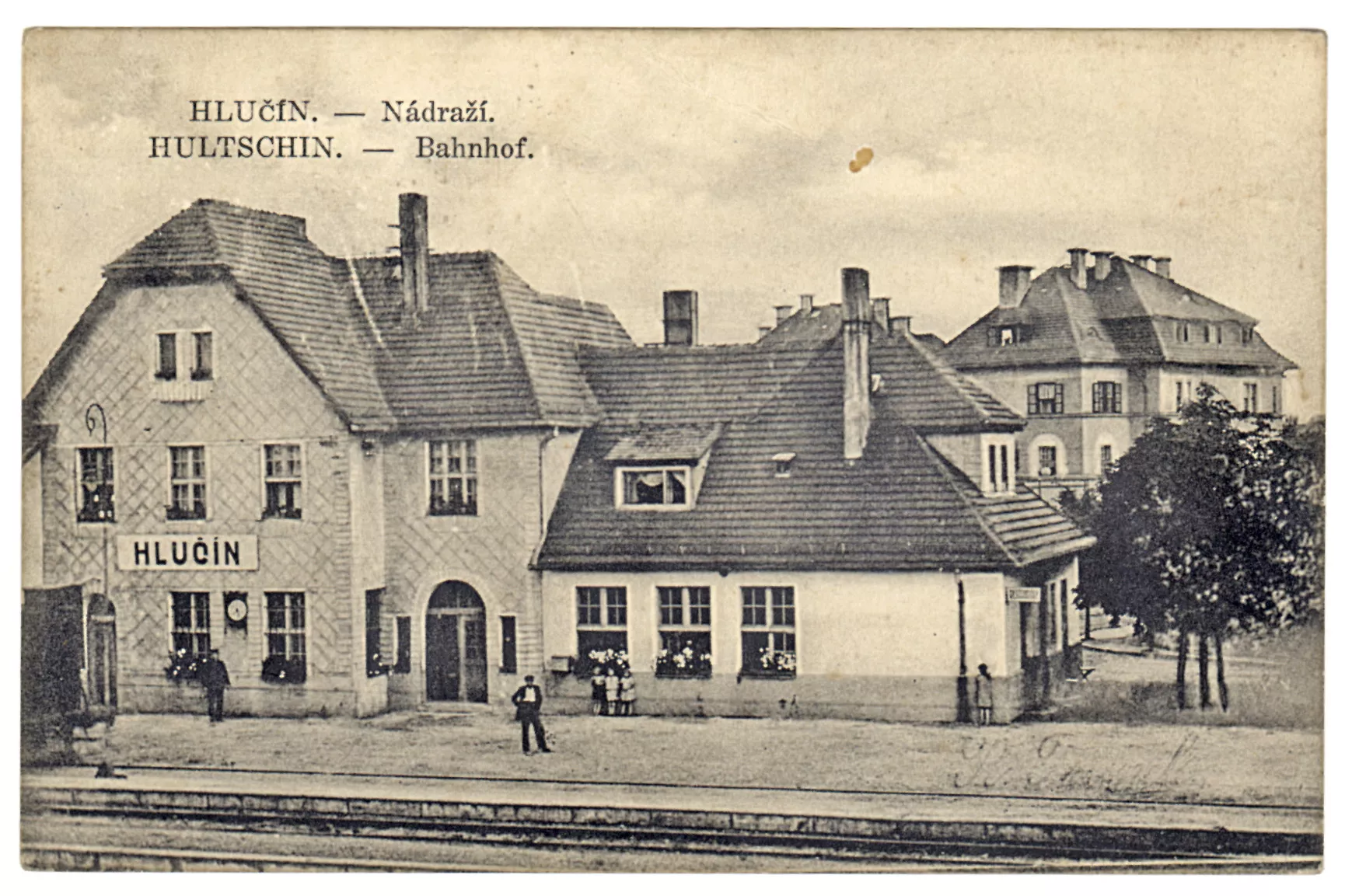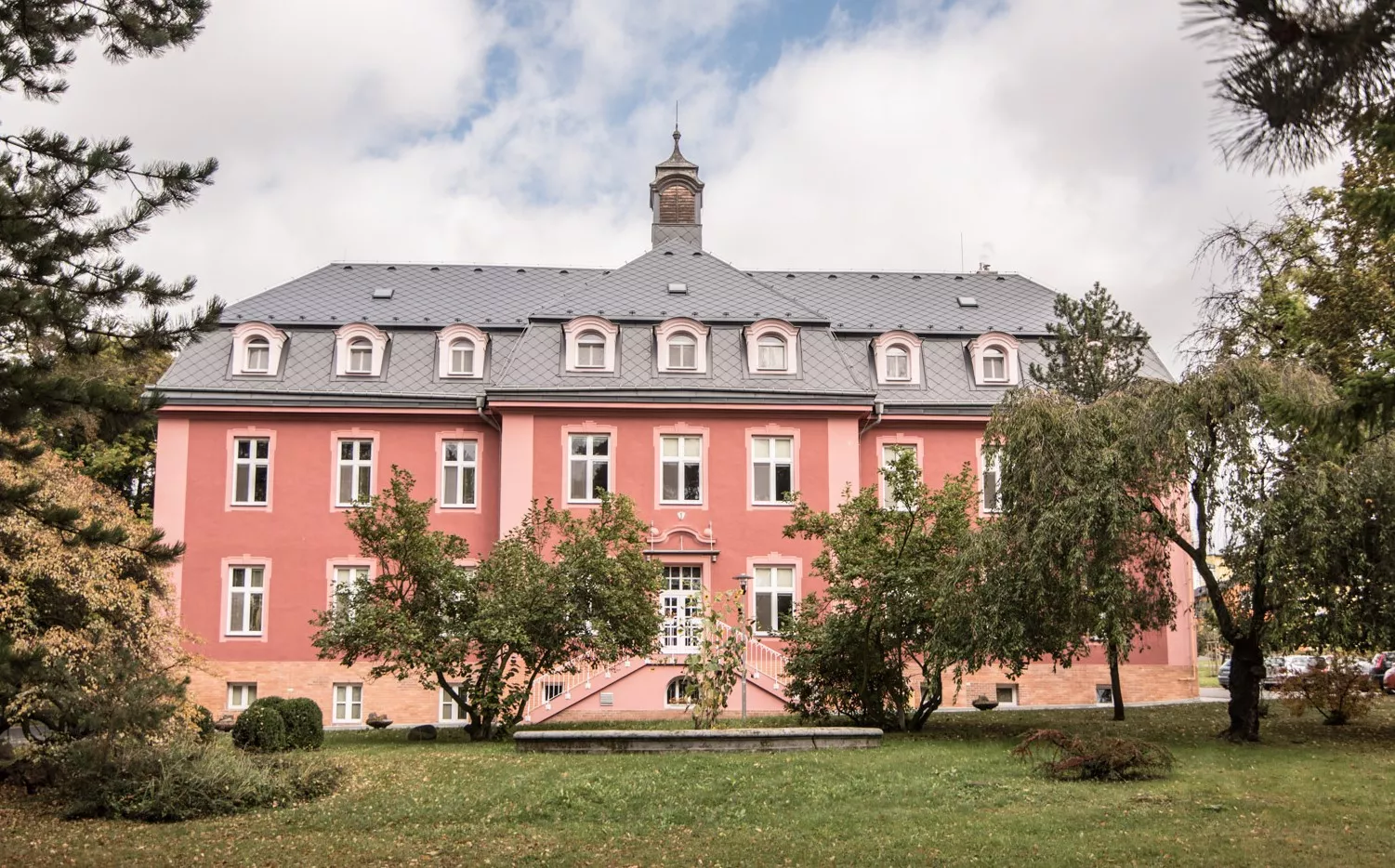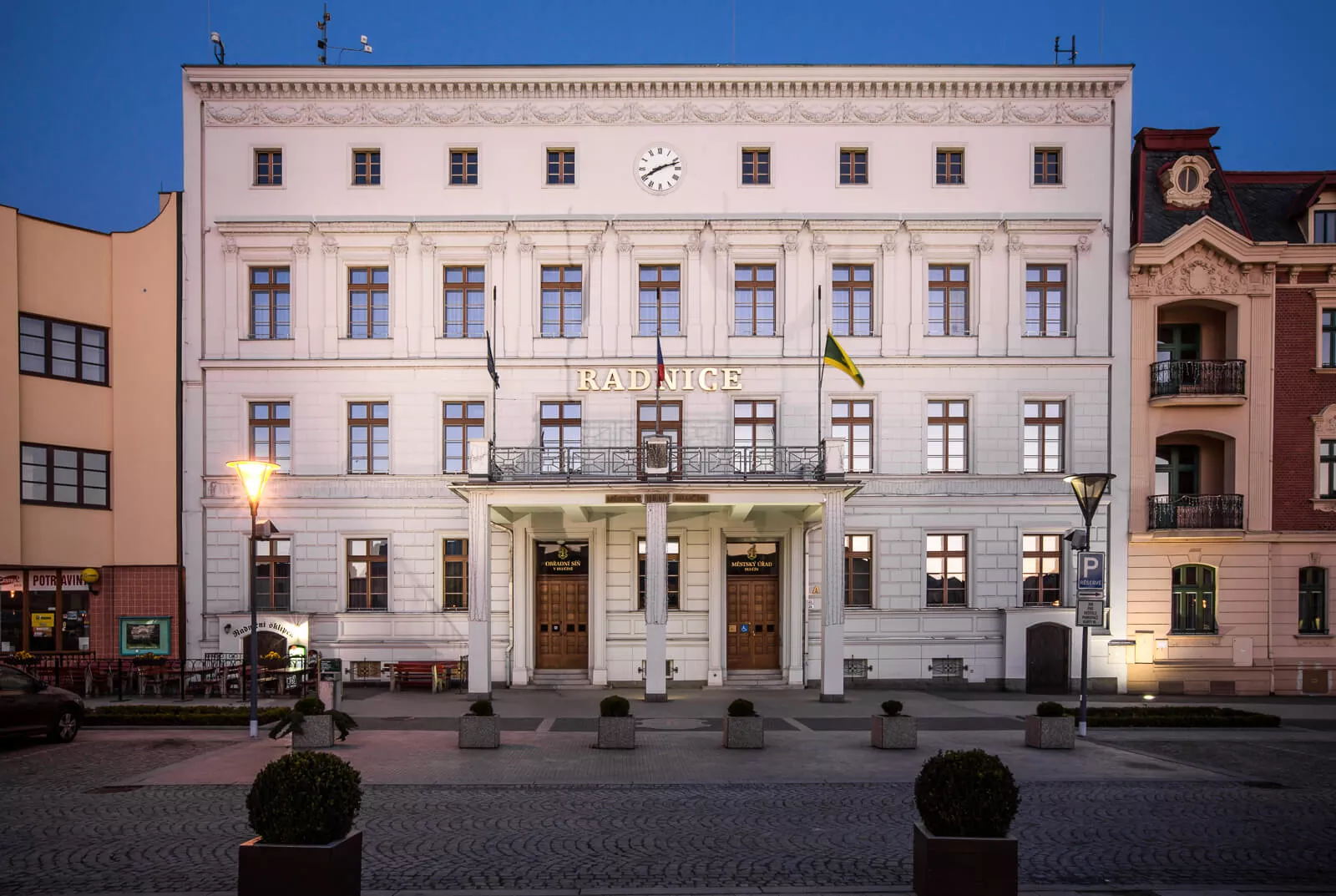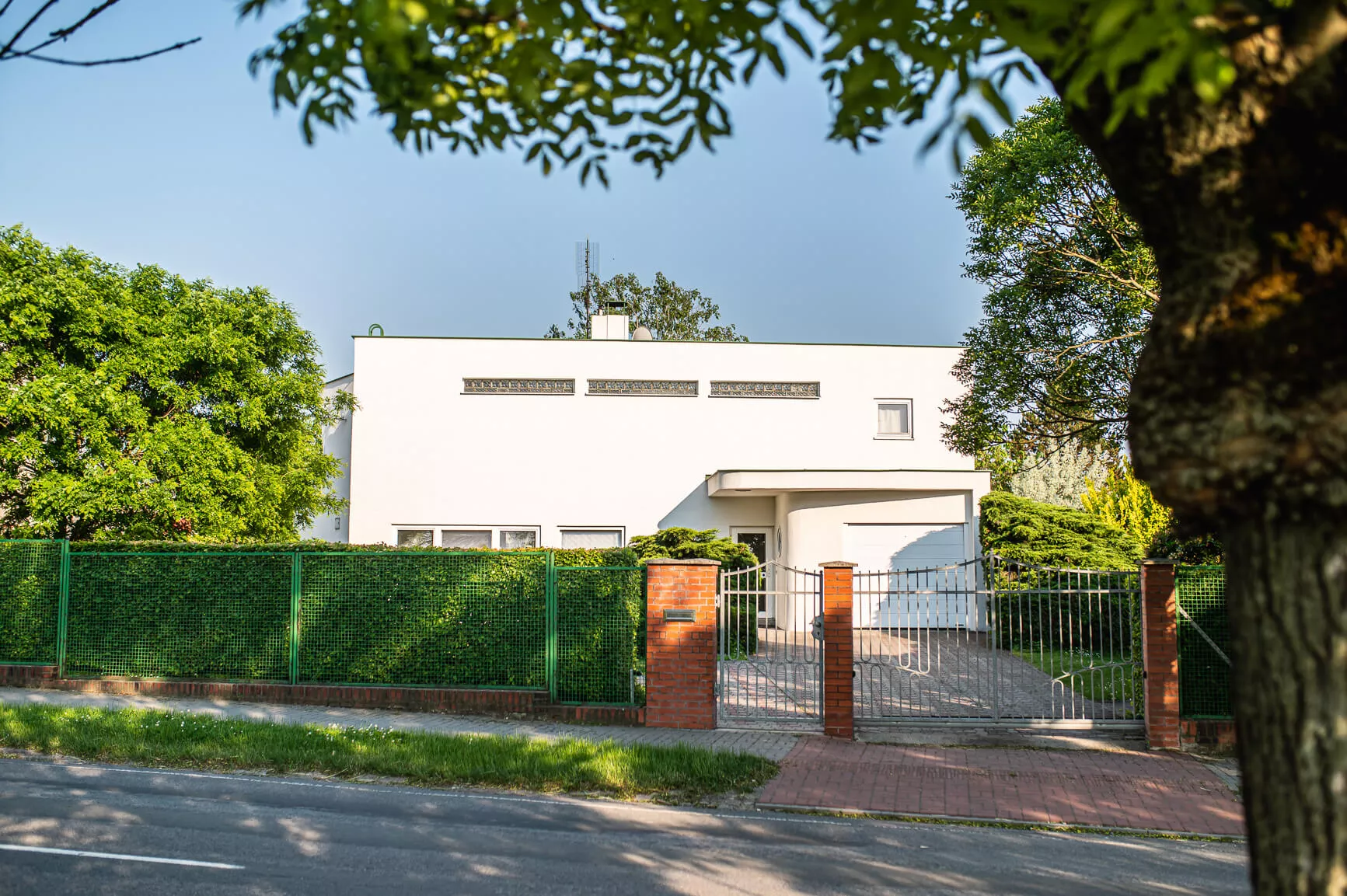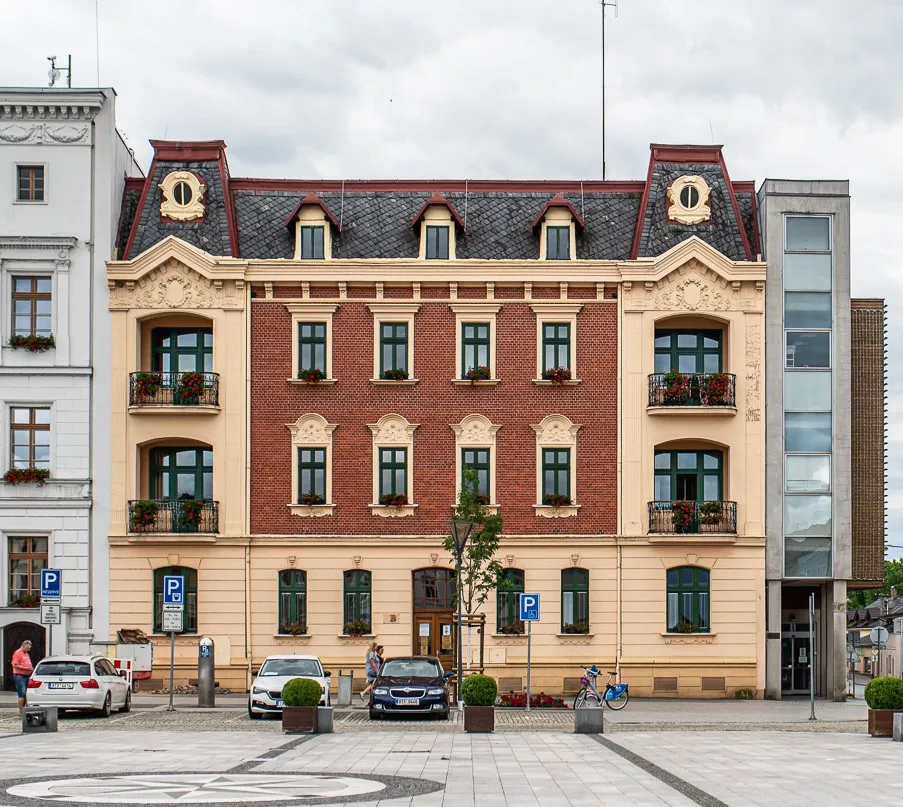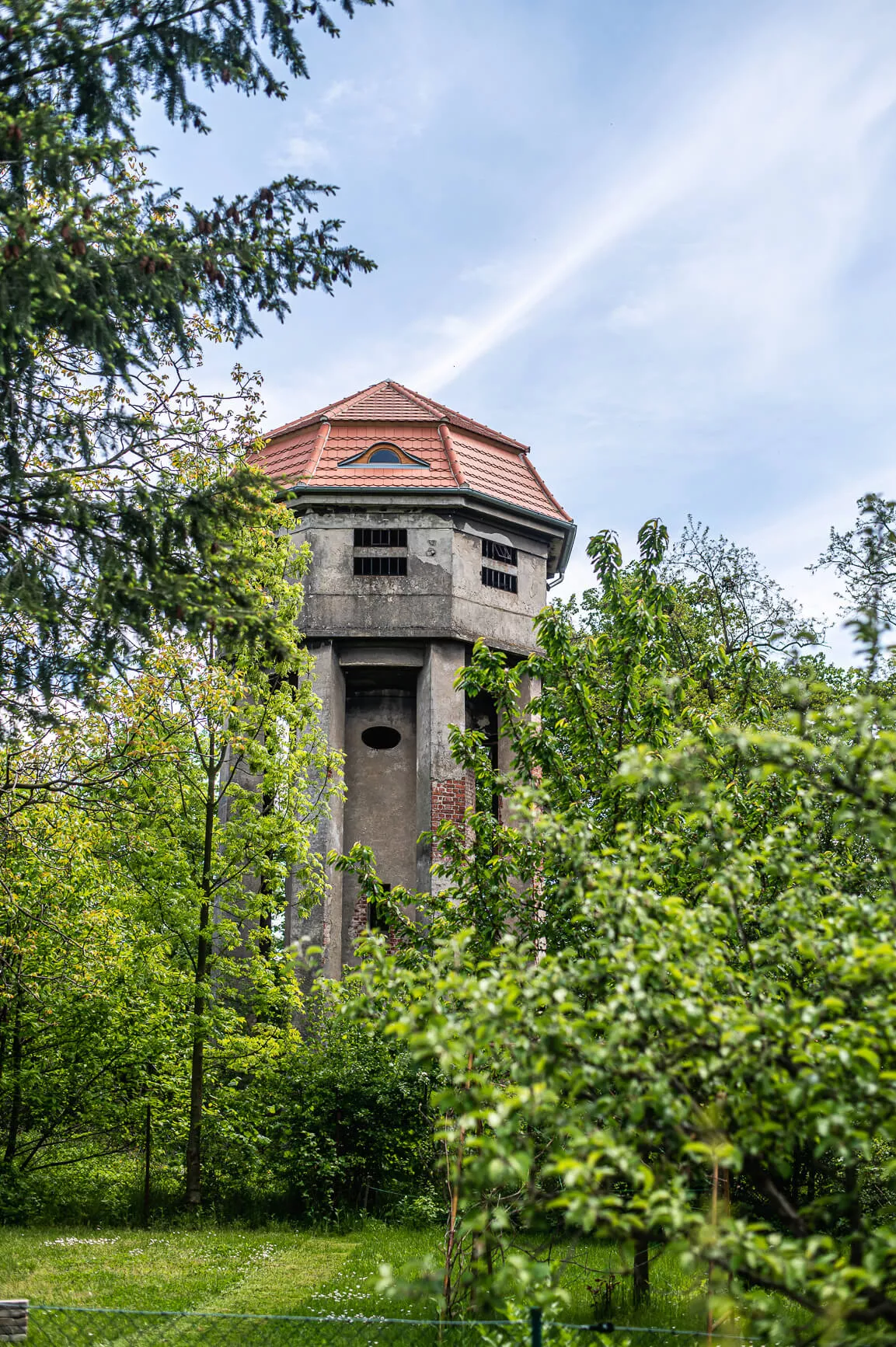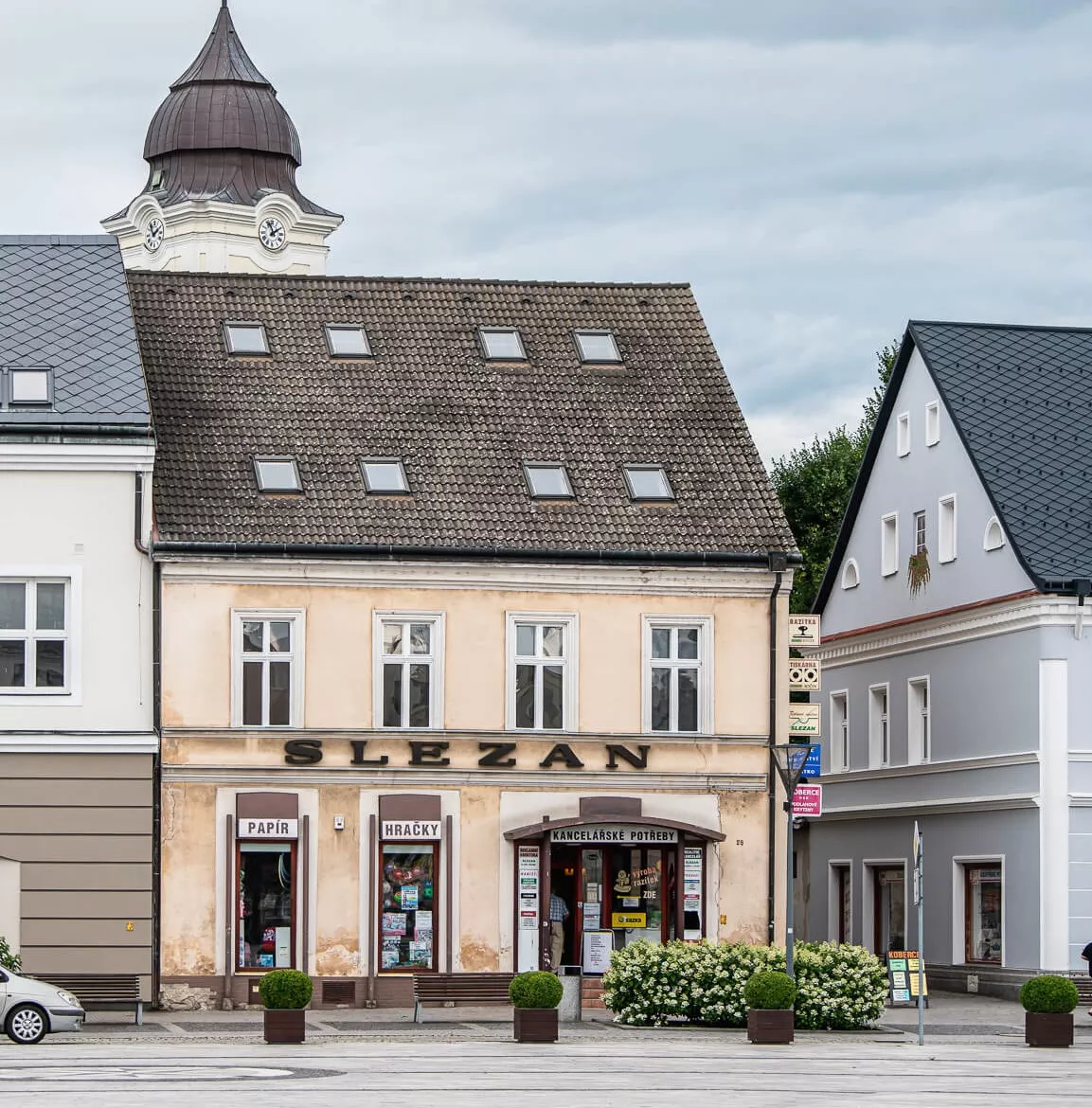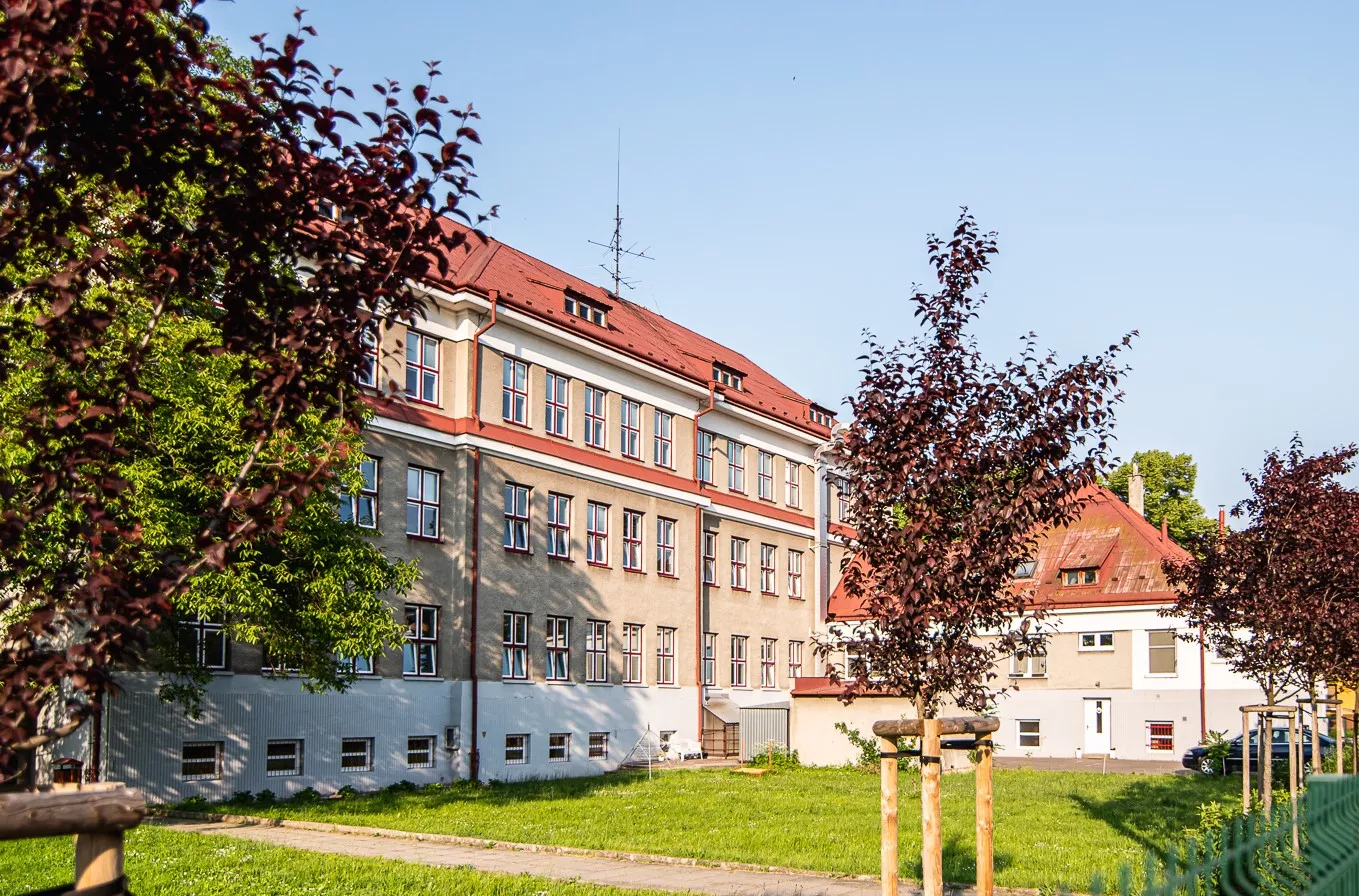When the Czech journalist and politician Ignát Hořica visited Hlučín sometime before 1895, he wrote: I look about the square, not particularly pretty nor especially remarkable, and spot an old acquaintance, which pleases me. I have seen him in so many towns of the German Empire, and everywhere he looks the same. For in Germany they have a special “postal Gothic”. Wherever a new “Kaiserliche Post” is built, it is always of bare brick the colour of a crayfish, in certain stylised Gothic types. Anyone who has seen two “Kaiserliche Post” will recognise a third from afar. (Remembering Silesia, 1895)
The Hlučín post and telegraph office matched that German type exactly. Though less grand than the post offices of larger towns, it became a distinctive ornament on the square. It was built in 1886 at the centre of the northern frontage, on the site of the old school. Curiously, its designer was not a state architect of the Imperial Post, but Hlučín’s then mayor, Stanislav Woytych (1850–1909), who also designed the nearby fire station (1888–1889) in the same spirit of Prussian brick Neo-Gothic. The “crayfish-red” hue of its exposed brickwork and the plastic mouldings of its corbel courses set it sharply apart from the surrounding buildings. It was, in fact, the town’s first secular building in exposed-brick Neo-Gothic. The façade was dominated by a tall, stepped, Gothic-style gable decorated with an arcaded frieze and a trio of pointed-arch windows. A round opening at the top was intended for a clock. The gable was crowned with a metal weather vane, overtopped only by the telegraph-antenna structure on the ridge of the pitched roof.
After the Second World War, the building’s overtly German character was viewed as provocative, and some voices in the town leadership called for the removal of visual symbols of the German past, among which this structure figured by its very style. Once the post office had moved to new premises in Školní Street, the original building was radically rebuilt in 1963. The addition of another storey, a new rhythm of windows, and a coat of white plaster completely erased its original appearance.

